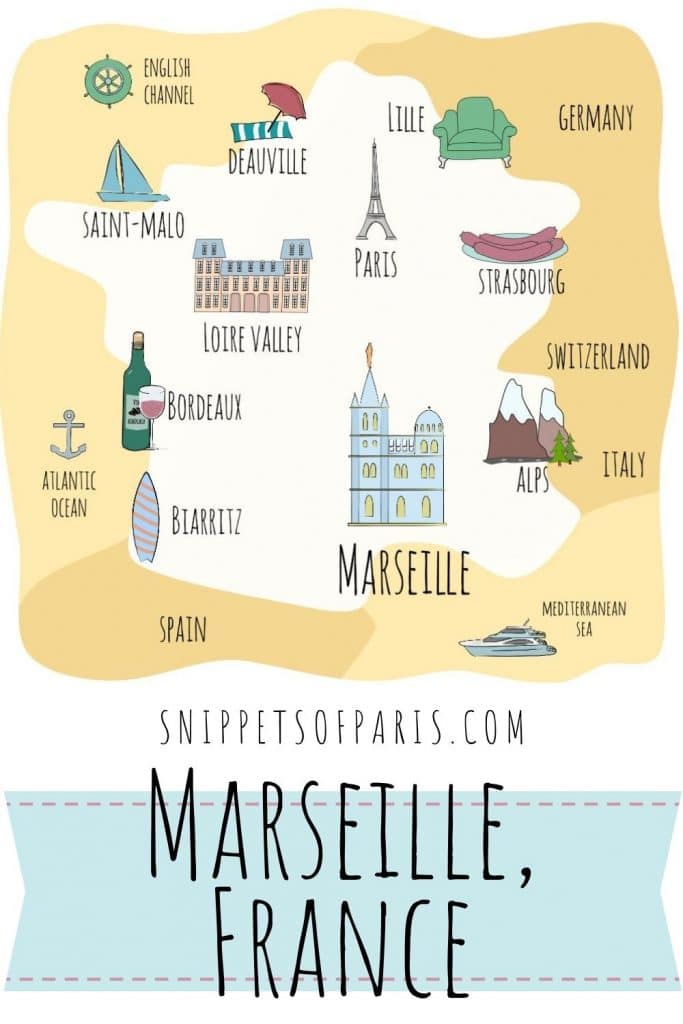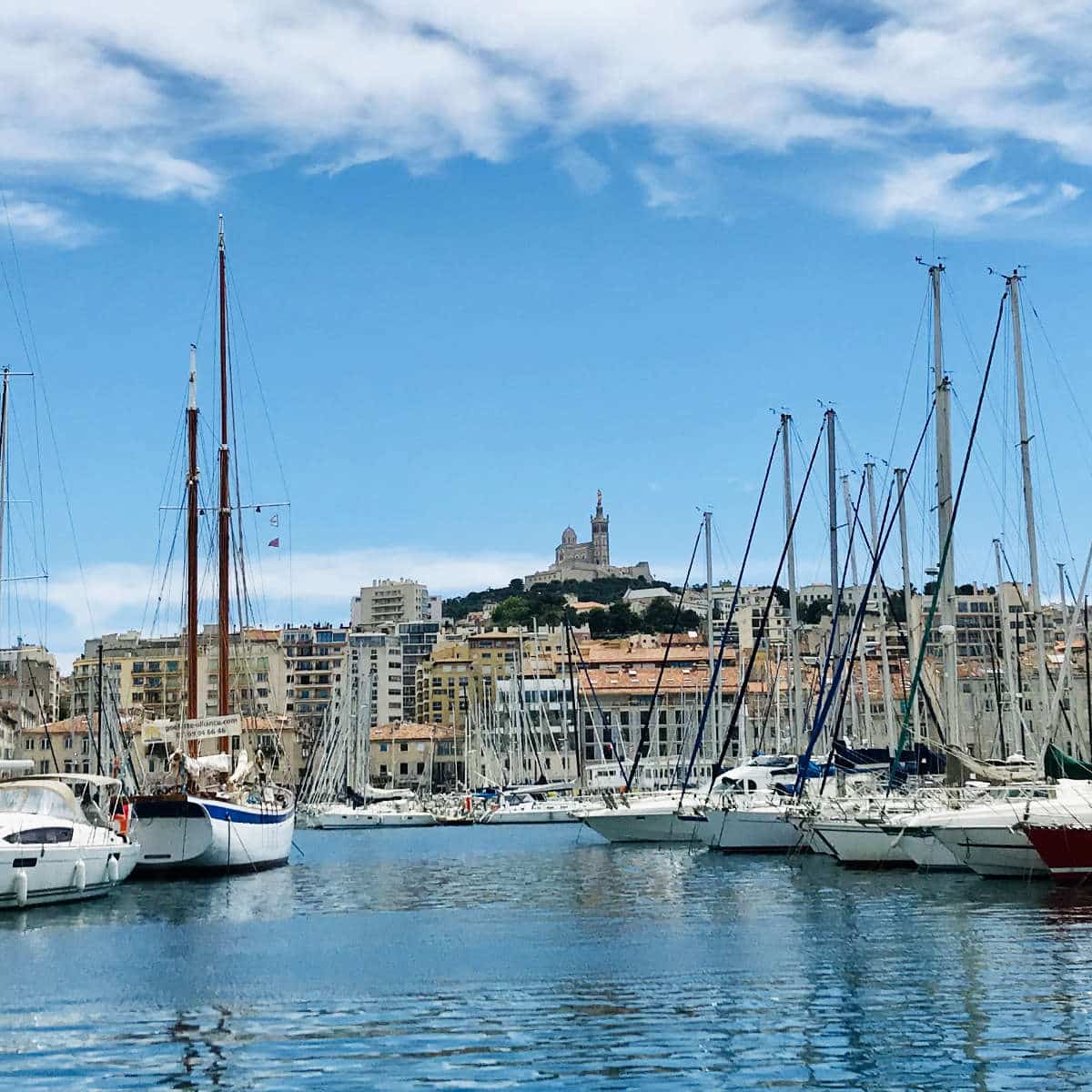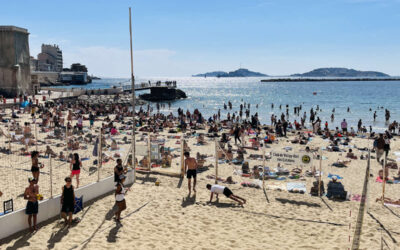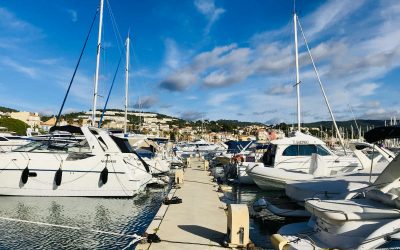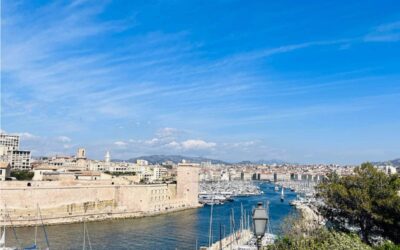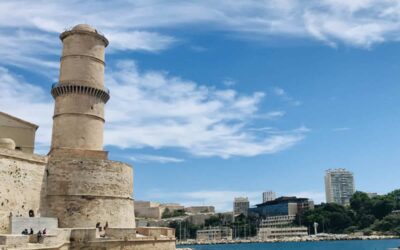Marseille is a city with a reputation, even within France. But in recent years, it has undergone a transformation. The ancient Greek city on the French Riviera, near the rolling hills of Provence, has so many things to see and to experience. And I don’t just say this because my husband is a proud Marsaillais!
Marseille is famous for being the oldest city in France, its Vieux Port on the Mediterranean, as well as its passion for its football (soccer) team Olympic de Marseille.
To understand Marseille (pronounced mar-say), you have to know its location. The city on the Mediterranean is a natural harbor, bringing settlements to the area since around at least 600 BC. Earliest indications show that it was known as the Greek colony Massalia.
Then came the Romans, and with them, the coastal city of Marseille became an early center of Christianity. Tradition holds that Mary Magdalene came to Marseille, after landing near the town of Arles, she converted the local people, and then retired to nearby Saint-Maximin-la-Sainte-Baume (about 50min away from Marseille by car), where folklore indicates she is buried.
Now, you might think that I am biased since I have family in the area, but rest assured that the city was even crowned the European Capital of Culture. With plenty of things to do in Marseille, this guide delves into the best attractions, how to get around, things to do, and more. Allons-y!
- Things to do in Marseille
- 1. Stay in the Vieux Port (Old Port)
- 2. Visit the MUCEM
- 3. Take a walk through Le Panier
- 4. Climb up to Notre Dame de la Garde Basilica
- 5. Take the Petit train tour of Marseille
- 6. Grotte Cosquer
- 7. Go to Prado Beach
- 8. Eat a camion pizza
- 9. Take a boat out to Les Calanques
- 10. Have a night out at Cours Julien
- 11. Take a boat to Château d'If
- 12. Book hop-on and hop-off bus tickets
- 13. Go to an Olympique de Marseille football game
- 14. Drink a Pastis apéritif
- 15. Museums at Palais Longchamp
- 16. Catalans beach near Vieux Port
- 17. Vallon des Auffes fishing village
- 18. Views from the Le Pharo
- 19. Les Terrasses du Port and Les Docks
- 20. Walk along La Canebiére
- 21. Take a day trip to Aix-en-Provence
- 22. Eat a bouillabaisse
- 23. Go shopping on Rue Saint Ferreol
- 23. Seafood restaurants at L'Estaque
- How to get to Marseille?
- Where to stay in Marseille?
- When is the best time of the year to visit?
Things to do in Marseille
1. Stay in the Vieux Port (Old Port)
As I said before, in recent years the city has recently undergone a renaissance. It was never the prettiest city to look at, especially compared to jewel-box Paris or cosmopolitan Nice on the Riviera. It has a grittier old-age look.
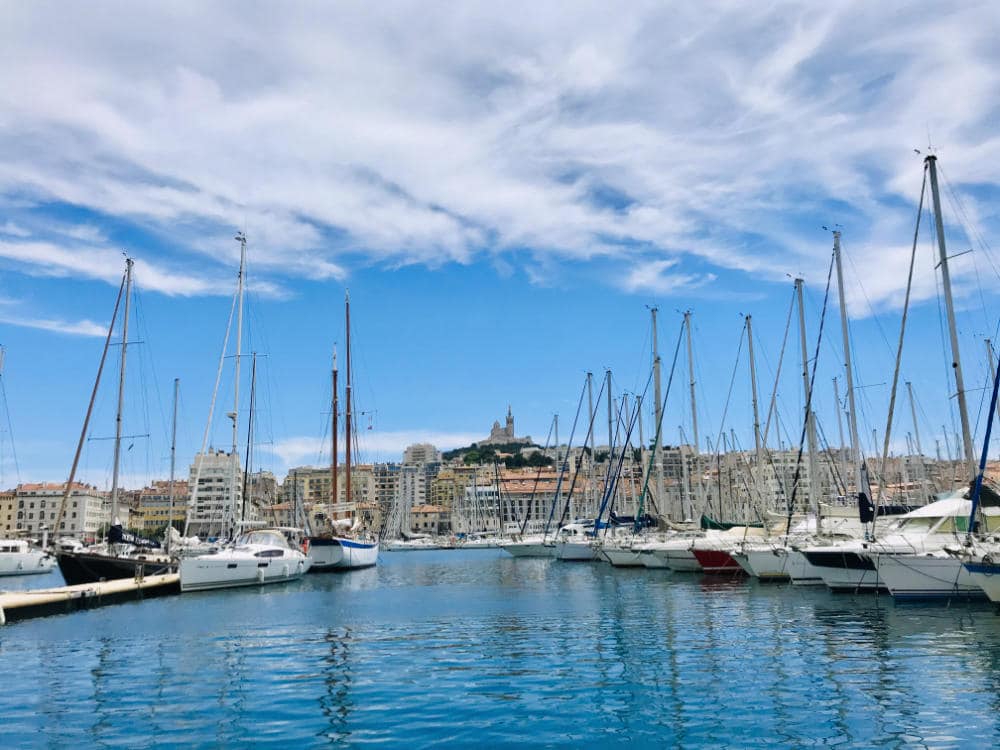
As such, the ancient greek harbor, the Old Port was completely renovated in 2012 with improved traffic circulation and a new metro station underneath. As such there is not much remaining in terms of Roman ruins.
However, a few steps away in the Jardin des Vestiges is the remains of the city’s ancient Greek and Roman port. These ruins date back to as early as 600 BC, and were discovered during a construction project in the 1960s.
This area is the historical heart of the city, where the Greeks and the Romans first landed, and where the Marseillais themselves gather for any big occasion.
Depending on what time of the year you go, there are all sorts of attractions, such as a large ferris wheel in the center, a weird mirror art installation, the Christmas market, boats galore, and a ton of bars and restaurants. This natural harbor has been the heart of the city since 6 BC.
There’s plenty of restaurants and bars around, so this is always where I recommend friends stay for a nice night out and an easy walk back to the hotel.
Hotels around the Vieux Port :
- €€€ – Hôtel Carré Vieux Port
- €€€ – Escale Oceania Vieux Port
- €€€€ – Hotel C2
- €€€€€ – InterContinental – Hotel Dieu
- €€€€€ – Sofitel hotel – with views all over Vieux Port
2. Visit the MUCEM
At one end of the Vieux Port, you will find the new Museum of Civilisations (MUCEM – Musée des Civilisations de l’Europe et de la Méditerranée).
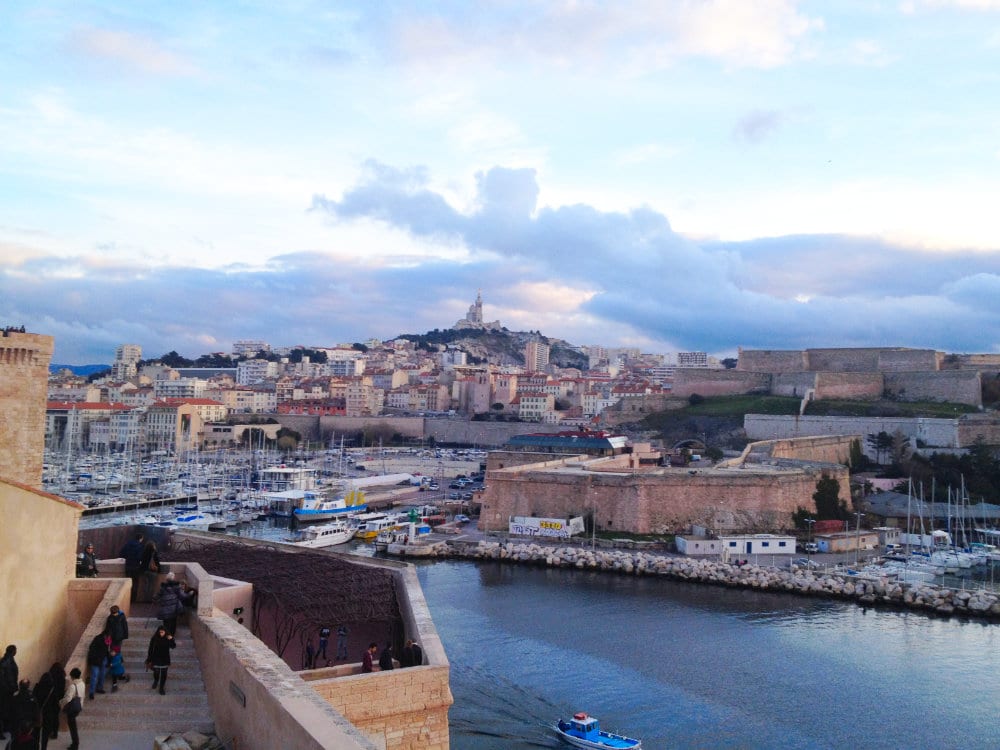
Marseille’s newest attraction opened in 2013 when the city was designated the European Capital of Culture.
It is built on reclaimed land next to the site of the historic Fort Saint-Jean, which is also part of the visit. The fort is at the entrance of the View Port harbour, in effect to protect the city, but also as a warning to the locals.
Marseille was a prosperous city even after the fall of the Roman civilization, largely due to its rich harbor. Its wealth made it a target for the Royal Kings based in Paris, a city with which Marseille has always been at odds. In 1660, French King Louis XIV built the Fort Saint-Jean in Marseille, but famously had his cannons pointed AT the city, instead of to defend it.
The modern part of the MUCEM is a square-shaped metal building made of latticework. Inside this remarkable modern art building are artefacts dedicated to Mediterranean civilisations around the bassin and the cross-pollination of cultures.
In addition, there is also a modern art section featuring various current artists and exhibitions. Plan to have a coffee in its amazing Le Mole Passedat Café on the terrasse of the MUCEM. It can get quite crowded, so book your skip-the-line tickets here.
3. Take a walk through Le Panier
The oldest neighborhood in the city, Le Panier is right next to the Vieux Port and Mucem. The area barely survived the German occupiers, who tore down all the other old buildings around the Vieux Port and the Hotel de Ville.
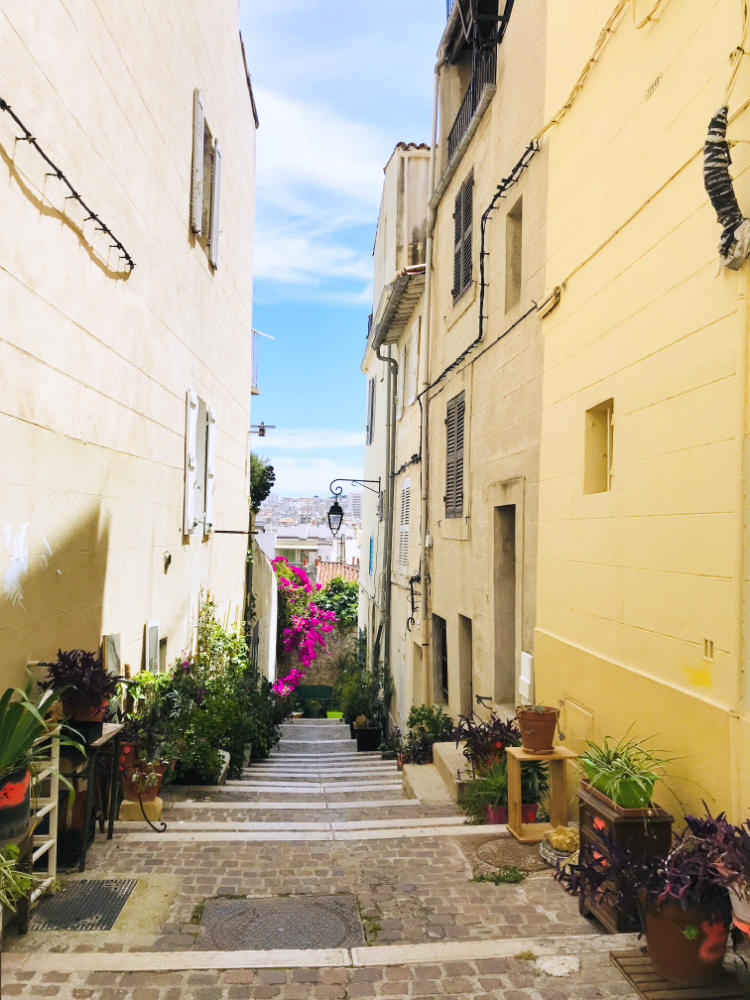
Marseille’s strategic position on the sea made it an early hub for the French Resistance for escape routes and safehouses. The city’s propensity for rebellion was an advantage, rather than a disadvantage. But while Hitler considered Paris was too beautiful to be bombed, he did not have any such reservations about Marseille.
Marseille was bombed several times and invaded by German soldiers. Many neighborhoods including much of the area around Marseille’s famous Vieux Port and Le Panier were deliberately blown up with dynamite, before finally being liberated in 1944 by the Allies.
Nevertheless, with substantial rehabilitation, this area today attracts artists and tourists alike.
Wear good shoes, and if you have small children, take a toddler carrier. Its hilly streets, cobblestone footpaths, and narrow pathways are not the most stroller-friendly.
With its dozens of narrow cobblestone streets and charming little squares, you will step back into historic Marseille. You can read more about Le Panier here.
4. Climb up to Notre Dame de la Garde Basilica
Known as the Bonne Mere to its locals (Good Mother), this Basilica overlooking the Vieux Port is the highest natural point in Marseille, visible from everywhere.
In 1214, a local priest was inspired to build a small chapel to the Virgin Mary on top of the hill known as La Garde which was already belonged to the Church of France. In the 15th century, French King François I paid a visit to the city and decided that Marseille was poorly defended against neighboring Spain.
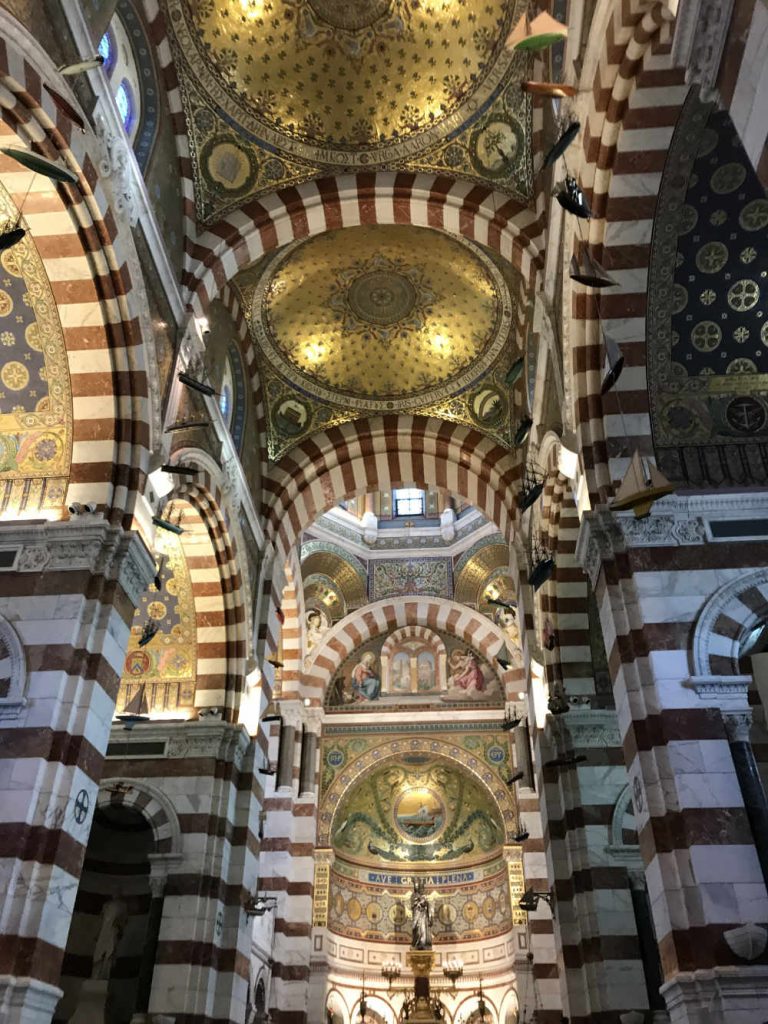
He realized that an excellent spot for his battlements would be on top of this hill which overlooked the entire city, and set about making the Basilica bigger, with surrounding fortifications. As the Basilica grew in stature, local sailors and fishermen started giving thanks to La Bonne Mere for keeping their safe on their travels.
In 1853, Napoleon III decided to make the Basilica even bigger, and that is the building we see today. The building survived occupation, when German soldiers and snipers were stationed there during World War II.
I’ll be the first to admit the Basilica is not the easiest to get to. But the views are worth it. There used to be a funicular direct from the Vieux Port, built by Gustave Eiffel’s company (of Eiffel Tower and Statue of Liberty fame), but that closed in 1967.
Today there are several public buses running up to the Basilica. You can read more about Notre Dame de la Garde here.
5. Take the Petit train tour of Marseille
If you are looking for a scenic tour of Marseille, you can take the Petit Train (Tourist train) that runs from the Hotel de Ville (City hall) next to the Vieux Port. Trains run several times a day up to Notre dame de la Garde, and tickets can be purchased online. Or for something different, try a Segway tour.
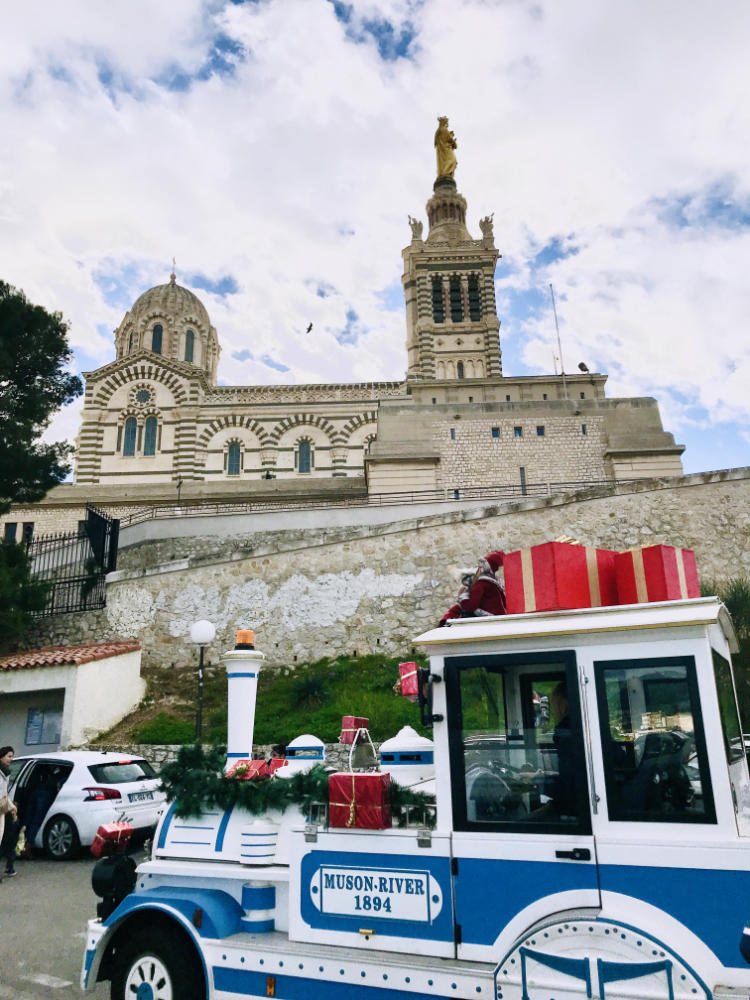
6. Grotte Cosquer
Marseille boasts a captivating blend of new and ancient attractions, and Grotte Cosquer is a prime example. One of the newest attractions on the Vieux Port, this cave has hidden in it prehistoric paintings dating back 27,000 years.
While the actual cave is underwater, a full replica has been built next to the Mucem on the Vieux Port.
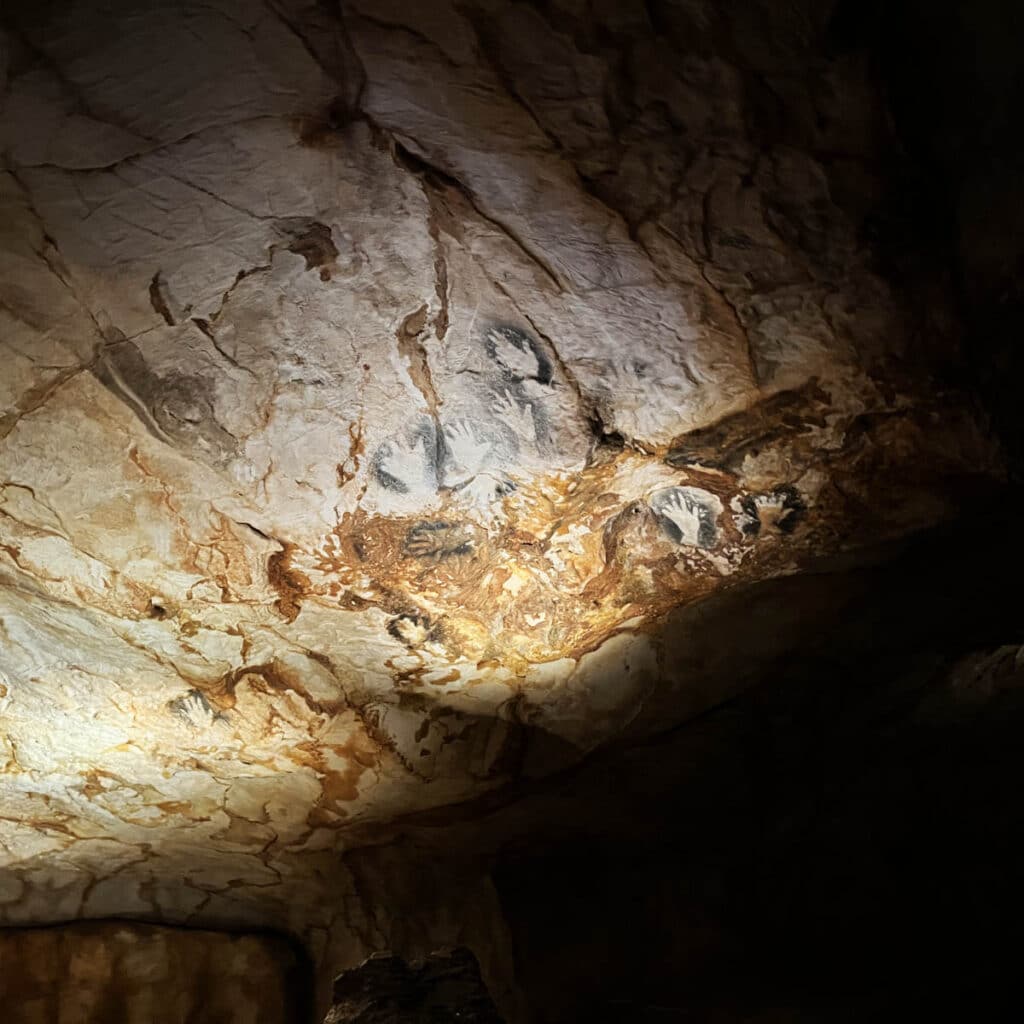
Located underwater, with access by elevator, visitors get to hop into a little cart, rather like an amusement park ride and travel through the caves, with the automated headphones providing commentary.
Once inside, the cave reveals the intricate drawings and paintings that adorn the walls. From horses to cattle, the artwork is a testament to the creativity and ingenuity of our ancient ancestors.
But the most intriguing part of the Grotte is the handprints that can be seen over several parts of the caves, making it one of the most popular caves to visit in France.
It was also very interesting to note the penguins drawn on the walls, drawn on the walls, indicating that those creatures once inhabited the shores around the French Riviera. You can read more about visiting Grotte Cosquer here.
7. Go to Prado Beach
Given that this is the French Riviera, no trip to Marseille would be complete without a trip to the beach.
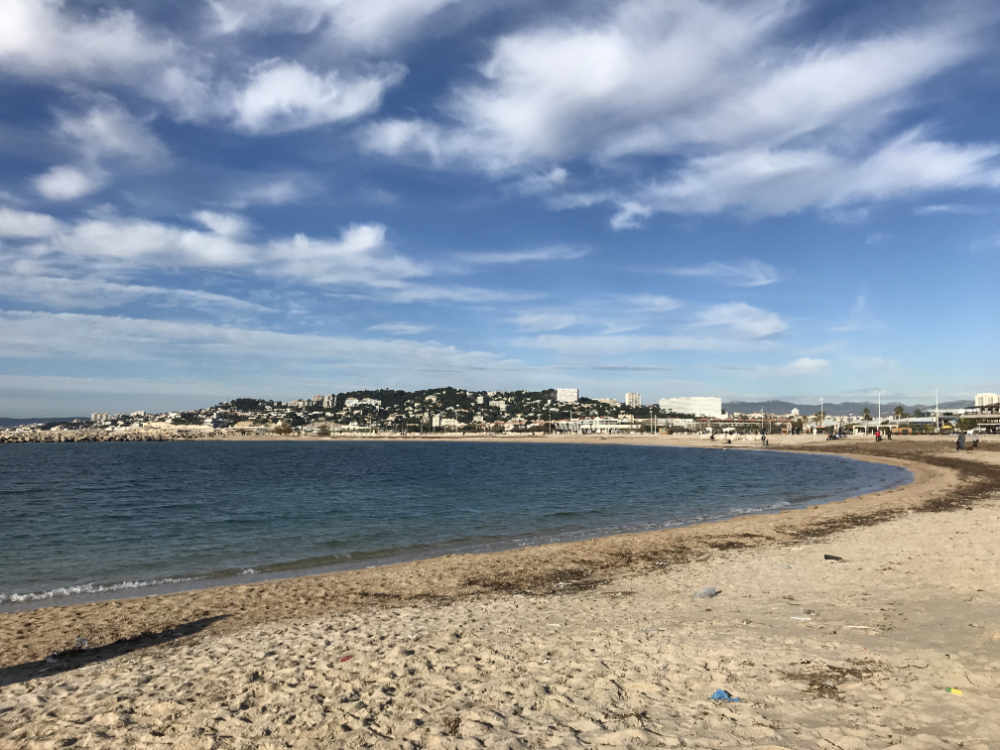
Prado beach is the largest beach in the city, with several restaurants and bars directly and a festive atmosphere at any time of the day or night.
The Prado is a little further away from the center of town and will need a car to get to, but once you do get there, there are miles long stretches of beaches with plenty of space and amenities.
8. Eat a camion pizza
Marseille is famous for its camion pizzas (food trucks) so near the Prado is the perfect time to get try one. If you eat pork, try a pizza with figatelle, a corsican sausage that is a delicacy in the area.

9. Take a boat out to Les Calanques
A set of cliffs to the west of the city, Les Calanques are a magnificent natural wonder. With towering rocks and aquamarine clear water, you can decide to hike, swim, or just take it all in.
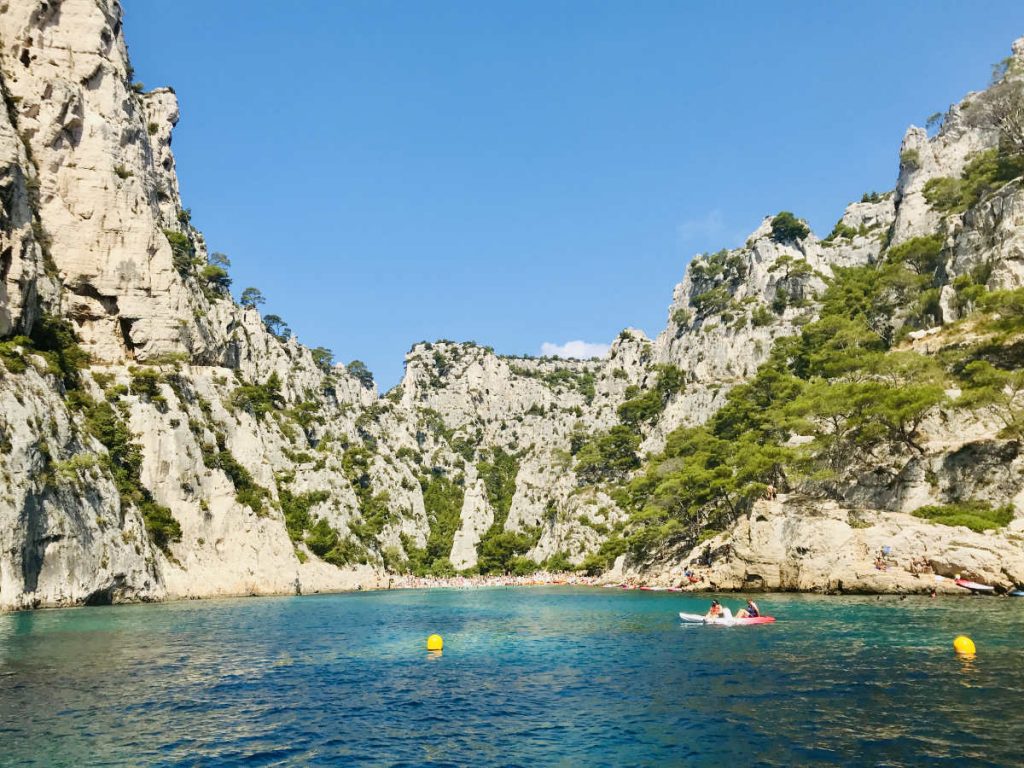
Drive over to the small fishing town of Cassis if you prefer to explore the Calanques by land. Wear hiking boots if you go by land, as the rocks are rather slippery. Bring a bathing suit if you wish to go for a dip.
You can also take a boat leaving from the Vieux Port. There are several tour boat options to head to the Calanques from Marseille that you can see here. You can read more about visiting the Calanques here.
10. Have a night out at Cours Julien
Street art with an edge, Cours Julien is the trendy place-to-be about a 10-minute walk from the Vieux Port. With graffiti everywhere, quirky little shops and eclectic bars and restaurants, this is where the cool kids hang out.
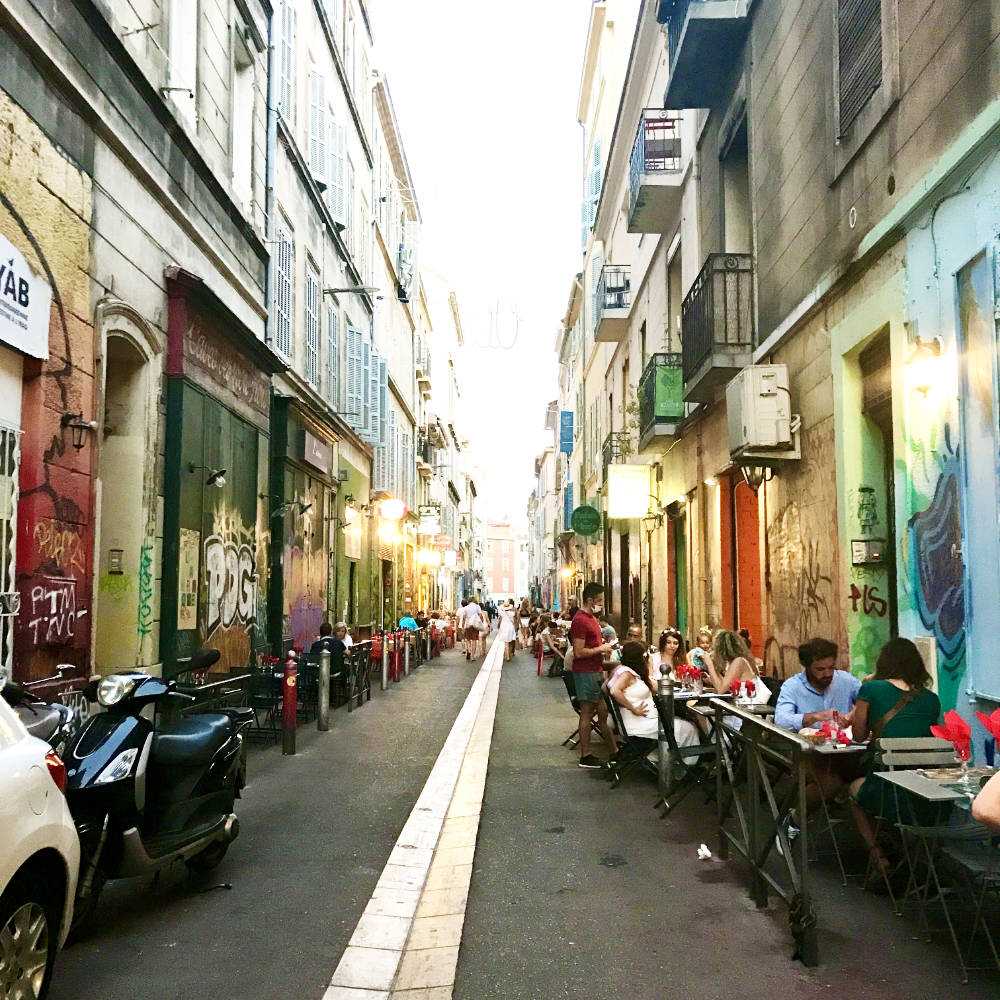
There is the main square which has a lot of bars and restaurants, but do explore the side streets such as Rue des 3 Mages and Rue des 3 Rois which have plenty small restaurants with everything from local provençale offerings to thai food takeout.
Visit Espace Julien for live music nearly everyday. Tickets can be purchased online, or at the door, depending on the event’s popularity.
This is also a great area of the city to stay in, with plenty of nightlife to make it easy to get back to your hotel.
Hotel near Cours Julien:
- €€€€ – Mama Shelter
11. Take a boat to Château d’If
If you prefer a boating trip with a bit of history, head over to Château d’If. It is the on the smallest island in the Frioul archipelago, and the site of fortress prison (a predecessor to the famous Alcatraz in California).
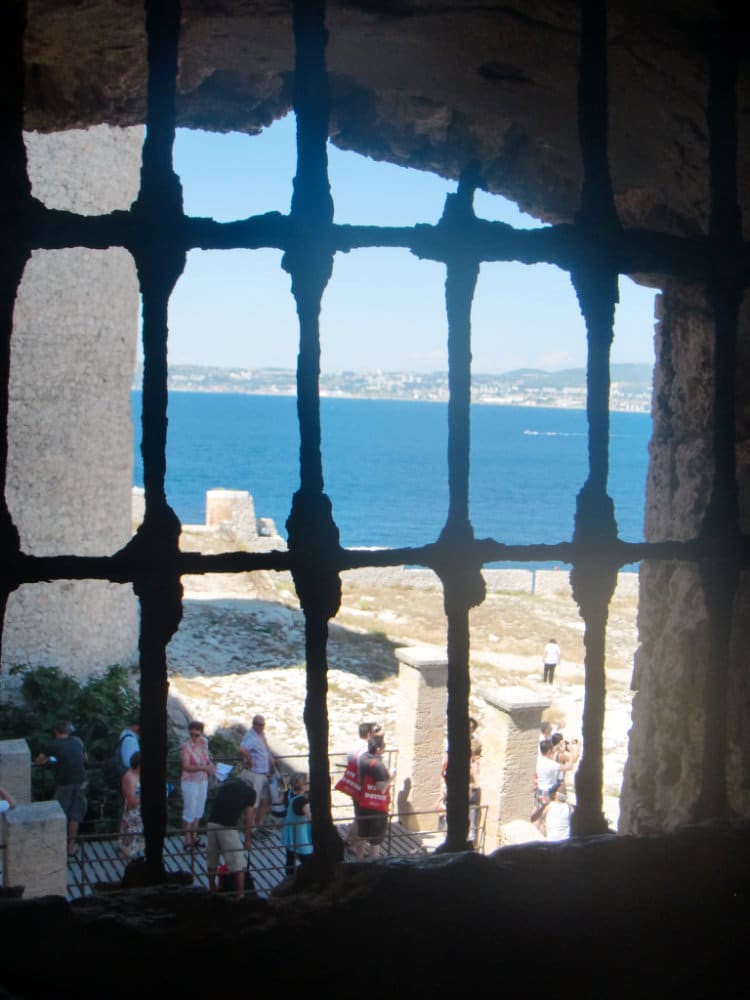
Château d’If hit new heights in pop culture when it was featured in Alexandre Dumas‘s Count of Monte Cristo. It was also reputed to be one of the prisons where the famous Man in the Iron Mask was held.
While his true identity remains a mystery, he was reputed to the older brother or twin brother of the Sun King Louis XIV. Look for the sign “Prison dite de l’Homme au Masque de Fer“, “Prison reputed to be for Man in Iron Mask”.
(Alexandre Dumas was so fond of Château d’If, he built a special writing studio surrounded by moat, that he called “Château d’If” at his home at Monte Cristo.)
12. Book hop-on and hop-off bus tickets
While ancient Paris was razed to the ground in the 1850s and rebuilt by Baron Hausmann, Marseille did not experience this sort of large scale city-planning. The city remains a hodgepodge of buildings that have been built over time, and narrow streets that have turned into one-ways to accommodate today’s traffic.
Marseille is one of the most grid-locked cities in France. There is a new metro system and an elaborate system of trams and buses put in place, but it is not as connected as Paris is.
If you do decide to drive, make sure you have a good up-to-date GPS system because a lot of the roads in the city are one-way streets, and getting around can be tricky. (Even we struggle driving around, and my OH grew up here!)
Alternatively, your best bet might be to book tickets for the hop-on-hop-off buses.
13. Go to an Olympique de Marseille football game
OM fans are some of the most passionate football fans in the world (we are not biased), and they are rightly proud of their beautiful stadium, Stade Velodrome.

If you are visiting between October and May, you may want to take in a game or take a tour of their new museum in the stadium.
With their banderoles, chants of Aux Armes, and fireworks all organized by the different clans of fans, it is a world away from North American sports.
| OM Fan Chants | English translation |
| Aux Armes, aux Armes Aux Armes, aux Armes Nous sommes les marseillais Nous sommes les marseillais Et nous allons gagner Et nous allons gagner Allez l’OM, allez l’OM Allez l’OM, allez l’OM hohohohohhohohohohohhoho Qui saute pas n’est pas Marseillais (eh) Qui saute pas n’est pas Marseillais (eh) | To Arms, To Arms To Arms, To Arms We are the Marseillais We are the Marseillais And we are going to win And we are going to win Go OM, go OM Go OM, go OM hohohohohhohohohohohhoho Who does not jump is not Marseillais (eh) Who does not jump is not Marseillais (eh) |
You can listen to the song and see the ambiance here. The lyrics are inspired by the French National Anthem, La Marseillaise.
The biggest rivals of the Marseillais is Paris of course, with Lyon and Nice trailing nearby. The Fan groups usually sit behind the goals or the narrow sides of the stadium (the tribunes), so book your tickets based on how “in-depth” an experience you are looking for!
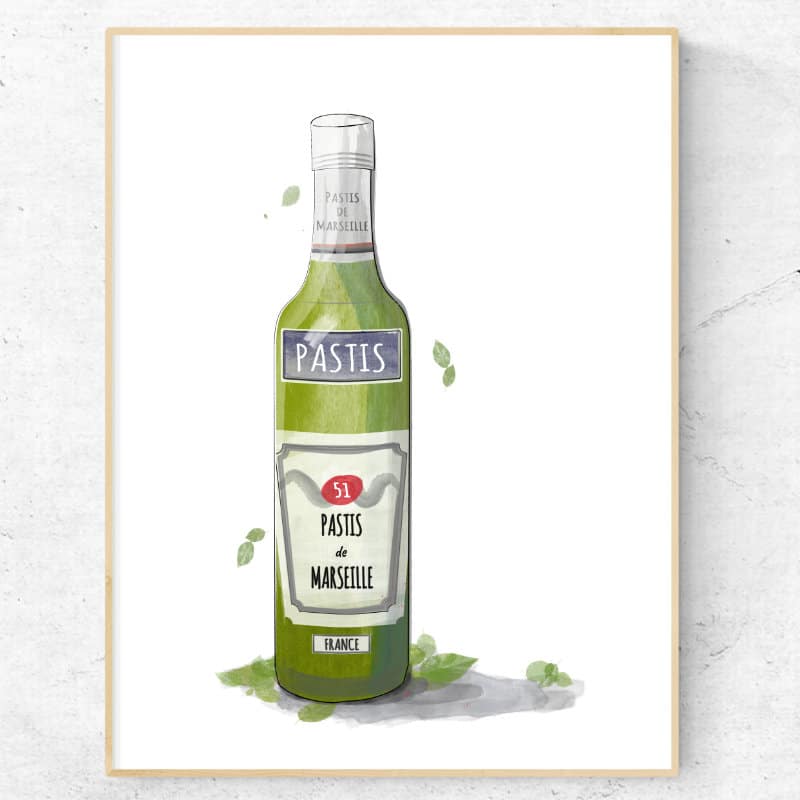
14. Drink a Pastis apéritif
The quintessential apéritif of France, Pastis de Marseille is an institution. With a fresh taste of anise seed and liquorice, it is somewhat similar to the Greek ouzo, which makes sense since both are on the Mediterranean.
With an alcohol strength of 45%, you then dilute with water, depending on how strong you want it and your preferred taste. You can read more about how to serve yourself a pastis and about other local foods and drinks to try in Provence.
15. Museums at Palais Longchamp
One of the most eclectic spots in Marseille is the impressive Palais Longchamp about 2 miles (3.5km) from the Vieux Port and Le Panier. It is not actually a palace, but a water reservoir.
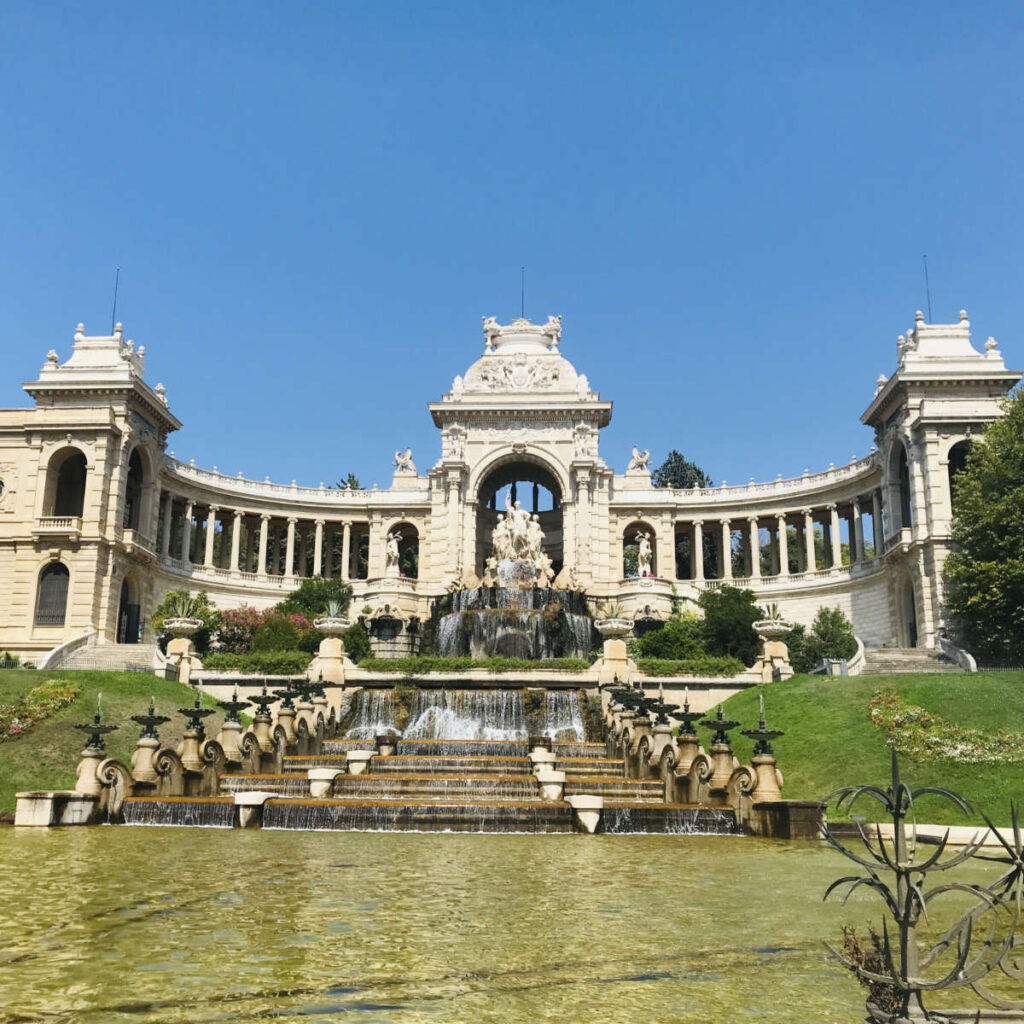
The elaborate palace-style château was built to celebrate the construction of the Canal de Marseille that brought water from the river Durance to the city. With a fanciful fountain in front and elaborate gardens behind, it became a zoo, a park, as well hosting two of Marseille’s top museums.
The zoo is no longer there, but the east wing of Palais Longchamp houses the Musée des Beaux-Arts, and the west wing houses the Museum d’Histoire Naturelle. You can read more about visiting Palais Longchamp here.
16. Catalans beach near Vieux Port
About a 15 minute walk away from the Vieux Port is one of Marseille’s smallest and most popular beaches. Known as the Plage des Catalans, it is a small stretch of sandy beach that is popular with locals and tourists alike.
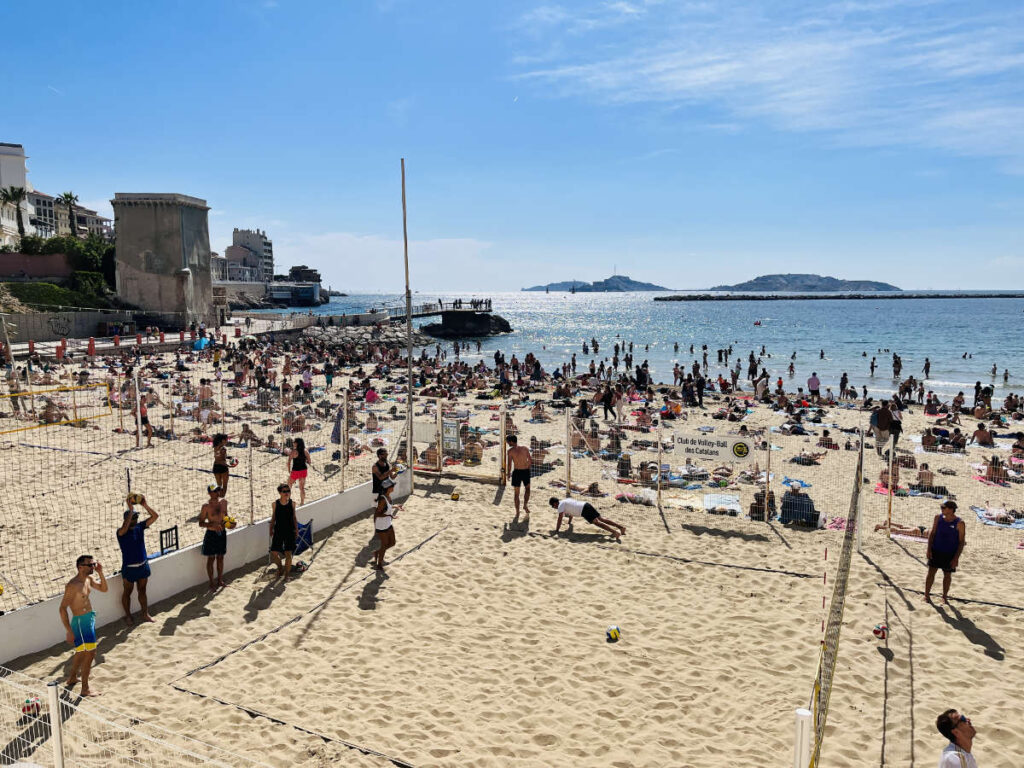
With plenty of volleyball nets and ice cream trucks, you will have to go early to claim a spot in the sun.
17. Vallon des Auffes fishing village
About 5 minutes from Catalans beach and 20-minute walk from the Vieux Port, there is a small fishing village called Vallon des Auffes. With a large bridge called the “Pont de la corniche Kennedy”, it is in the heart of Marseille’s 7th arrondissement and one of the most picturesque sites in the city.
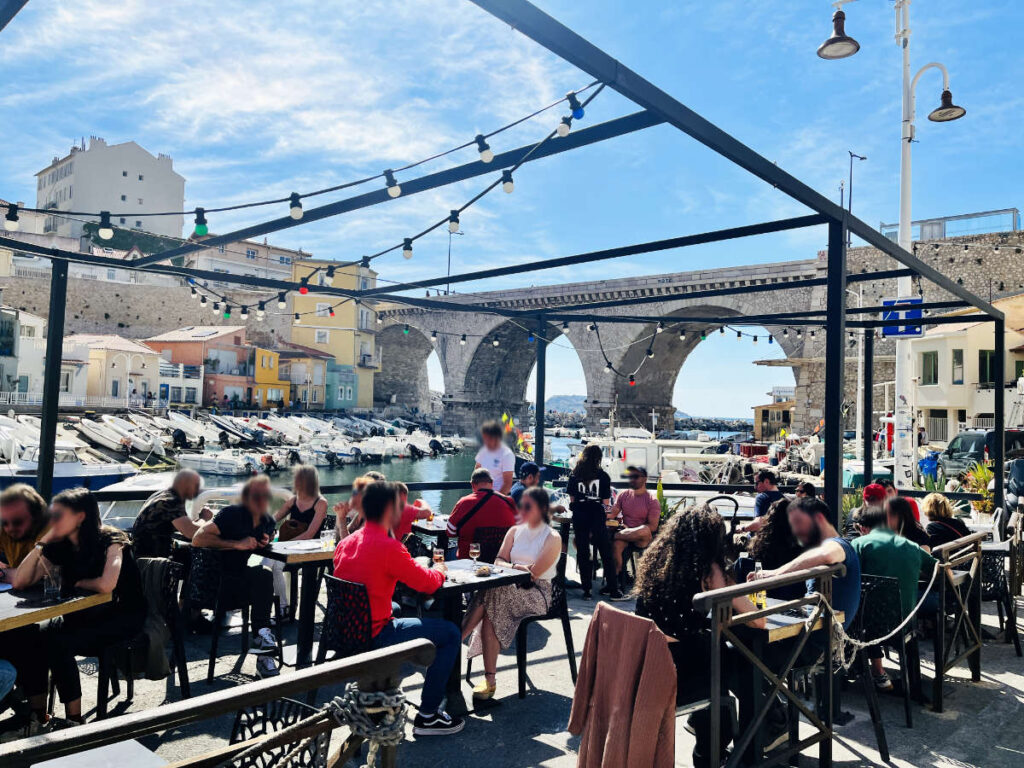
With colorful pastel houses, plenty of fishing boats and small restaurant terrasses, this is a wonderful spot to indulge in an apéro at sunset. You can read more about visiting Vallon des Auffes here.
18. Views from the Le Pharo
At one corner of the Vieux Port is one of Marseille’s most luxurious hotels, the Sofitel with some of the most expansive views of the Vieux Port and surrounding area.
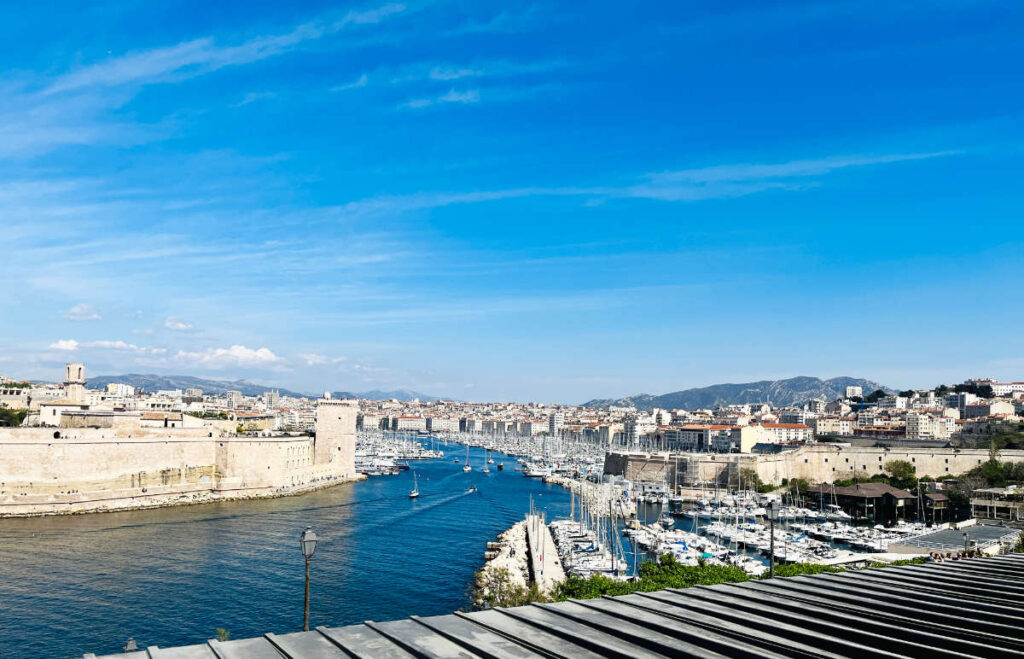
If you are not staying at the Sofitel, but still want to enjoy some superb views, head to the Parc du Pharo, which is a park and exhibition hall that is a favorite with the locals.
19. Les Terrasses du Port and Les Docks
If you are looking to do some shopping, you can’t go wrong with these two malls which are right next to each other.
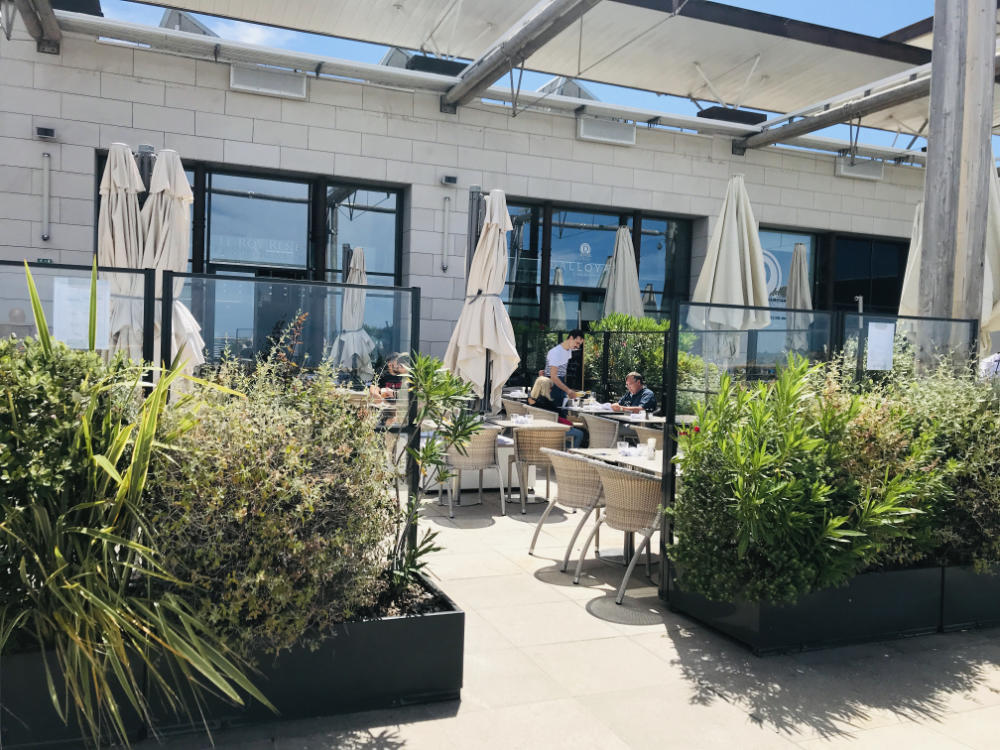
While Les Terrasses is a new modern mall with every shop imaginable, Les Docks is a set of old warehouses that were completely renovated inside while still retaining its old-world industrial charm.
Don’t miss the large expansive terrasse with its cafés and restaurants on the 2nd floor of Les Terrasses du Port. The mall is located at: Les Terrasse du Port, 9 Quai du Lazaret, 13002 Marseille.
20. Walk along La Canebiére
Walk along La Canebiére, aka what the locals call the “Champs-Elysées of Marseille”. A large avenue with beautiful classical buildings, the street has many shops and cafés, along with the city’s Grand Theatre where operas and other cultural events are held.
The official shop of Olympique de Marseille is also on La Canebiére, if you would like to take home a souvenir jersey.
21. Take a day trip to Aix-en-Provence
You cannot come all the way to Marseille and miss out on visiting Aix-en-Provence. The ying to Marseille’s yang, the chalk to the cheese, the chic (and rich) town of Aix-en-Provence is only 30 minutes away on the highway.
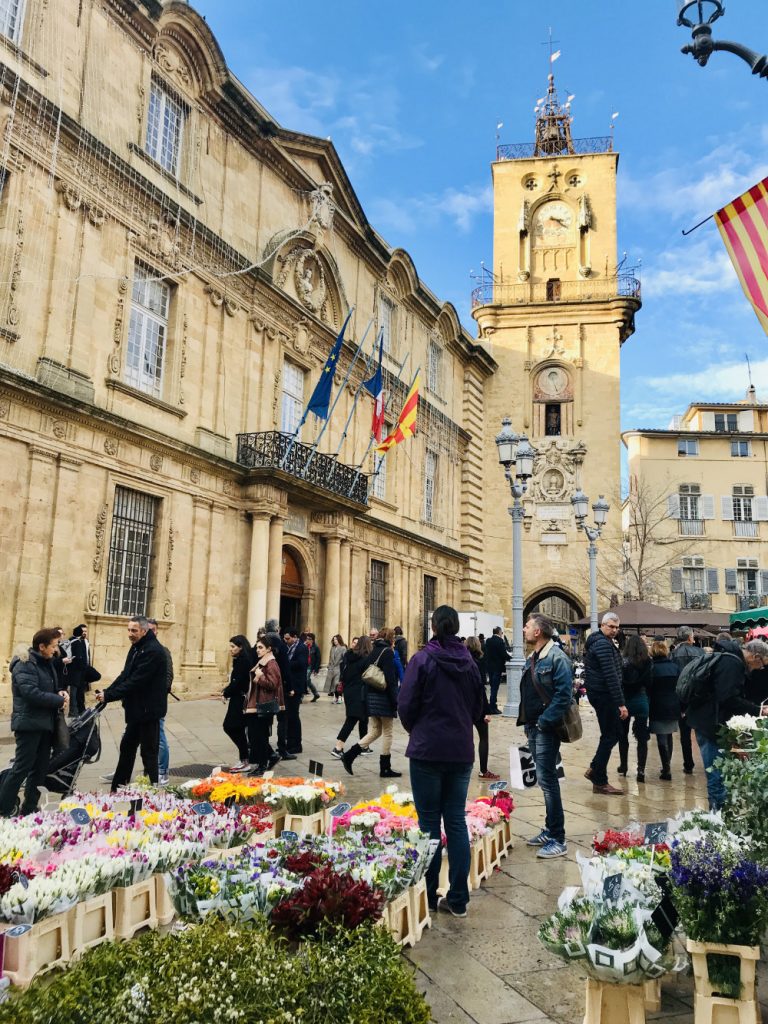
Sometimes called the 21st arrondissement of Paris, this fortified town with its old city walls has all the charm of a small town in Provence, and is a wonderful day trip from Marseille.
You can read more about Aix-en-Provence here, and see tour options to visit from Marseille.
22. Eat a bouillabaisse
Bouillabaisse is a traditional Provençale dish originating from the port city of Marseille. It was originally a fish stew made by Marseille fishermen, using the bony rockfish from the bottom of their fishing nets, which they were unable to sell to restaurants or at the local market.
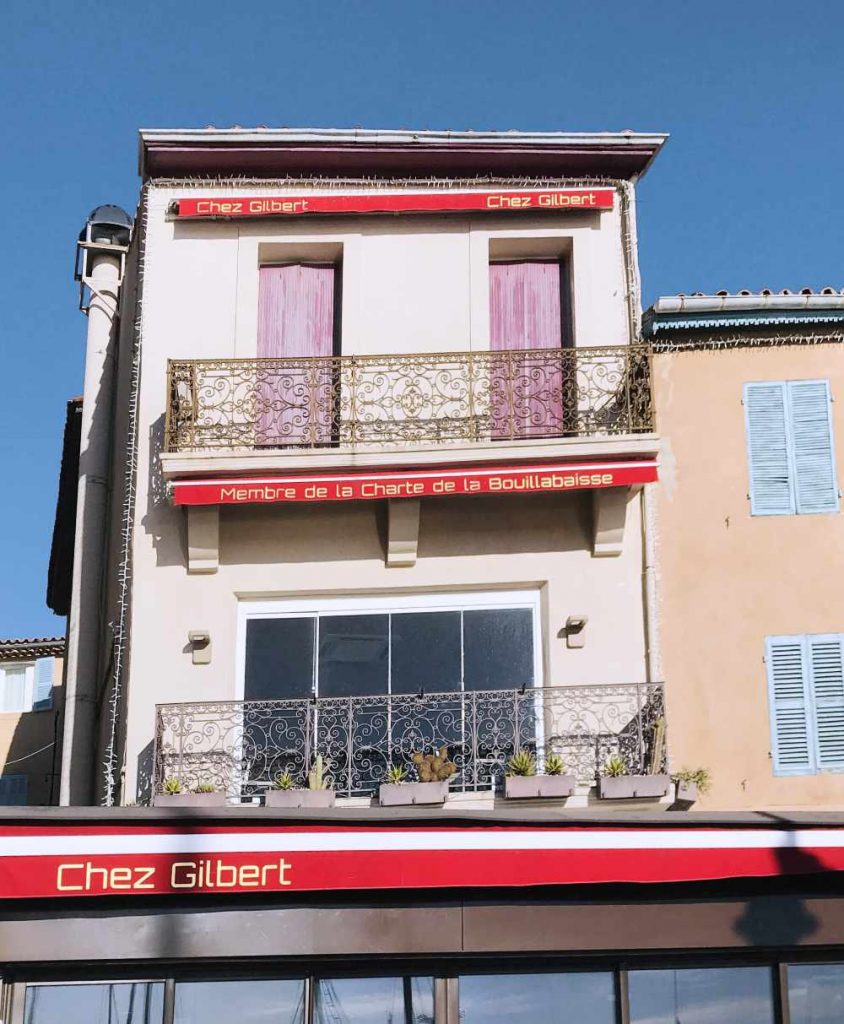
These days bouillabaisse is haute cuisine, with the prices to match. Small brasseries and diners in Marseille were so annoyed to see new upscale restaurants produce a version of “bouillabaisse” that in 1980 they came up with something called the “La Charte de la Bouillabaisse” (meaning the “Bouillabaisse Charter”). You can get the recipe for bouillabaisse here.
23. Go shopping on Rue Saint Ferreol
Just behind the Old Port is Rue Saint Ferreol which is a long pedestrianized street with shops along it. You will find most of the large European brands here, so warm up your credit cards!
23. Seafood restaurants at L’Estaque
While the Prado and Catalans beaches attract a lot of crowds, one beach that is relatively more tranquil is the park and boardwalk at L’Estaque.
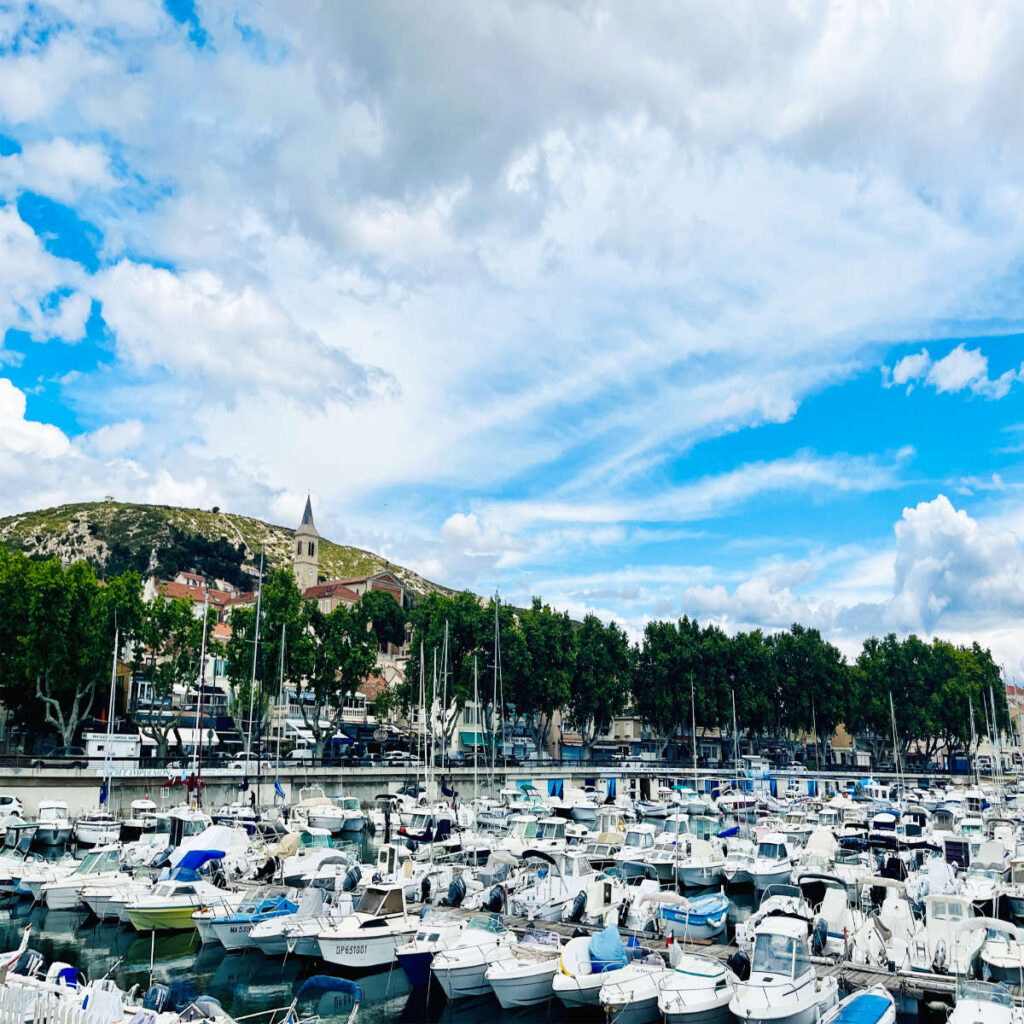
It is about a 20-minutes drive from the Vieux Port, so you will need a car to get there. There are plenty of restaurants in the harbour, certain of which have seating room on the 1st floor (2nd floor in America) to enjoy views all over the harbour.
How to get to Marseille?
The easiest way to get to Marseille is by high-speed train. It is a mere 3 hours away from Paris. If you drive, it will take around 8 hours. There is also an International Airport, with direct flights from London, Amsterdam, and other major European capitals.
Where to stay in Marseille?
There are several top areas to stay in Marseille, depending on whether you are interested in being close to attractions, coastal views, beaches, etc. Some recommended hotels are:
- Around Vieux Port – close to main attractions
- €€€ – Escale Oceania Marseille
- €€€€ – New Hotel Le Quai
- €€€€€ – Sofitel hotel – with expansive views across the Vieux Port
- Around La Corniche – best views of the coast
- €€€ – Le Rhul hotel
- €€€€€ – Le Petit Nice Passedat hotel
- Around the beach – near Prado and Borely beaches
- €€€€ – Golden Tulip Villa Massalia
- €€€€ – nhow Marseille
You can find more about where to stay in Marseille here.
When is the best time of the year to visit?
Marseille is lovely all year round, but don’t be fooled by its location on the French Riviera. In winter, it gets cold especially with a weather phenomenon known as the Mistral. High winds mean you will need a good winter jacket, and you will not be sunbathing on the beach.
On the other hand, winter is a perfect time to catch a football game, if you want the “Olympique de Marseille” experience.
Pro tip: Remember to exchange la bise 3 times (rather than the Parisian 2) when greeting someone.

So will you be putting Marseille on your France bucket list? Comment below and let me know. A bientôt!
